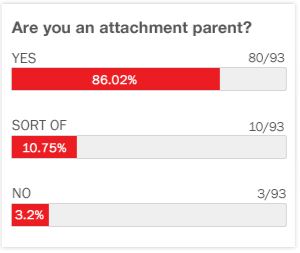The 33-month window for sight, smell and taste
Comment
Parenting expert Alan Greene, MD explains the importance of imprinting in a baby's first 33 months and its effects on taste, sight, and smell
197
Transcription:
Let me tell you about imprinting. One of my heroes was a guy named Konrad Lorenz who first studied something he called imprinting in geese. He was the guy that showed that at the moment that a little gosling hatches, that a moving object they saw in that critical window would imprint. And what happens, in nature of course, is that the first thing they see is their mom. And when they see the mom walk away, they are a little scared, they're tense. And when they follow after her little bed, when she's closer, they get this rush of endorphin, they feel better and very quickly they fall in love with their mother, they follow her everywhere - and you've probably seen little goslings following the goose - and they're happy and they imitate their mother. Imprinting, it works.
What he also showed was that if he tricked nature and he was the moving object these baby geese saw, they would imprint on him and follow him around instead of their mom. And he even showed that with a toy train. If a toy train was the thing they saw, it wasn't even alive, and the baby geese would follow that. The mom would get reintroduced and the imprinting had already happened, and the mom would honk and nip at them and try to get their attention, they would ignore her and follow this toy train, and make toy train noises when they grew up, and even try to mate with toy trains when they were adults. I mean, it didn't work out well for the toy trains or for the geese. What turns out that we now understand, that people learn food preferences by imprinting as well. It's not just sight, but it's the things that we taste repeatedly. But taste is important, but so is smell. Smell is probably even more important component than taste itself. So you want to make sure that your kids smell the aromas of the foods you want them to learn to like early in life.
It's also not just smell, sight for humans trumps taste and smell. You want them to see you eating healthy food, and see the food that they're eating as well. And thankfully, imprinting in humans isn't instant like it it is in the geese, but it takes time. It happens during pregnancy, and nursing, and solid foods. Overall it's about a 33 month window you have to teach your kids to imprint on, to fall in love with real food instead of artificial stuff that's not good for them like a toy train.
Parenting expert Alan Greene, MD explains the importance of imprinting in a baby's first 33 months and its effects on taste, sight, and smell
Related Videos
Transcript
Expert Bio
More from Expert
Alan Greene, MDFounder, DrGreene.com
Dr. Alan Greene founded his website, DrGreene.com, in 1995, cited by the AMA as "the pioneer physician web site." In 2010 he founded the WhiteOut Now movement to change how babies are fed from their very first bite of solid food, and in 2012 he founded TICC TOCC – Transitioning Immediate Cord Clamping To Optimal Cord Clamping. He is an author of several books including Feeding Baby Green and appears frequently in the media including such venues as the The New York Times, the Wall Street Journal, TODAY Show, Good Morning America, the Dr. Oz Show, and is a regular columnist for Parenting magazine. He is a practicing pediatrician and the father of four.




 GET ACCESS TO ALL PREMIUM CONTENT WITH NO ADS FOR $4.99/MONTH
GET ACCESS TO ALL PREMIUM CONTENT WITH NO ADS FOR $4.99/MONTH




Login or Register to view and post comments